Today smart technologies conquer the world and become an integral part of human life. In the West “independent” cottages are already considered a norm. In America so far the concept of “smart home” is typical only for elite real estate. This is not surprising, since its arrangement is not cheap – on average $150-200 per square meter area. The need to install such systems raises a lot of questions, since every property owner has his own ideas about “intelligent” housing. Some people need the automatic switching of lights, others dream to implement a multi-room, and others want a comfortable microclimate. It’s much easier and more affordable to “fill” the house with individual solutions, taking into account personal preferences. Consider the basic engineering systems and options for their improvement.
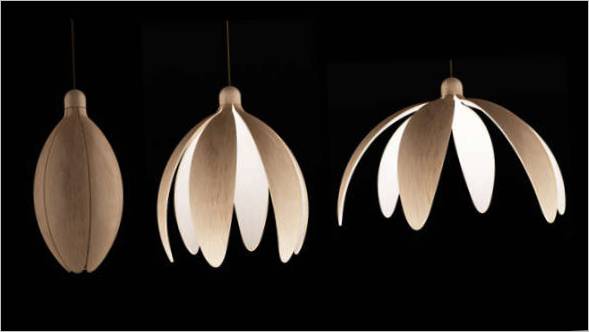
Tulip Bloom lamp
Home is where the light is
Of course, nowadays nobody is surprised by motion sensors and dimmers. These devices at first firmly entered the sphere of commercial real estate as a way to save money on payments of bills, and then “moved” into apartment houses. But dimmers and sensors are not the only solutions on the market of electrical equipment. So, for example, after the installation of fluorescent lamps, which automatically adjust to the level of natural light in the room, you do not have to turn on the light every time the sun for a while cloudy. According to experts, these lights provide not only comfort, but also savings – by reducing electricity consumption by almost 60%. The light source can also look unusual – like a tulip, for example. This solution in the Bloom lamp was realized by the Belarusian designer Konstantin Bolimond. Light intensity is regulated by the position of the electric device petals: the more open the “flower” is, the brighter the illumination. And thanks to built-in sensors, the tulip-light decides for itself how “open” it is.
An even more advanced version – “smart” lamps, which can change from day to night by adjusting the temperature range of the light flux. They give bright cold white light, which spectrum is close to the sun’s radiation, a soft warm light or bluish night light. And even if there is no window in the room, the owner of “smart” lights can wake up to morning light and fall asleep to the dim evening light. This innovative development is controlled by a switch, an app on your smartphone, as well as automatically according to a pre-set program.
Mentioned “smart” electric devices – a striking example of the desire of modern developers to adapt lighting in living space to the peculiarities of the human body. The concept of Human Electric Lightning is a much more thorough approach. In America, this is realized only by the Lighting Technologies company in their Color Fusion fixtures. The principle of control is also to change the color temperature of the light flux of the lamps. It is based not simply on the change of day and night, but on human biorhythms that have a positive impact on performance, mood and even well-being: the attention increases, sleep and wakefulness are normalized. According to the forecasts of experts of Lightning Europe Association, by 2020 such devices will make up about 7% of the lighting fixtures market.
For all their diversity, the lamps regulate artificial light, while natural light can also be controlled. The latter is often done with curtains or blinds, but there are also innovative solutions, in particular smart-glass. It is able to adjust the tint depending on external lighting, to protect against too strong sunlight. Interestingly, smart glasses often perform several additional functions: they can be dimmed manually at any time and used as a screen for a projector. In addition, the changing transparency of the design saves the house from overheating. For comparison: through ordinary glass 60% of heat penetrates into the room from the street, and through the tinted glass it reaches 6%.
Undoubtedly one of the indicators of comfort and coziness in the house is the organization of control of lighting, air conditioning and ventilation systems. In apartments with the area of more than 100 sq.m. of living space, the window of a hotel or a car park can be used as a projection screen. m., To achieve the desired effect is rather problematic. This will require the installation of a large number of devices with a complex network of switches. In the “clever house” it is possible to program a lot of scenarios on control of lighting, ventilation, movement of shading constructions.
The same principle is used to control many kinds of moving structures: shutters, blinds, roller shutters, window structures, garage doors. One of the best known solutions for these tasks is offered by SOMFY. The actuator controls can also be easily integrated with other smart home systems. For example, the curtains are closed when setting the twilight automatics or selecting the “Evening” lighting scenario.
It is worth noting that various climatic equipment, such as radiators, air conditioners, ventilation systems, requires a certain amount of time and some professional training. In the “clever house” all these devices are integrated in the system of intellectual automatics. You need only set the desired room temperature on the touch panel and the system decides which settings and how much power to turn on. These solutions allow you to create a different microclimate in each room. Flexible thermocontrol settings will not only help reduce energy costs, but also increase comfort in the home.
So you have water at your faucet
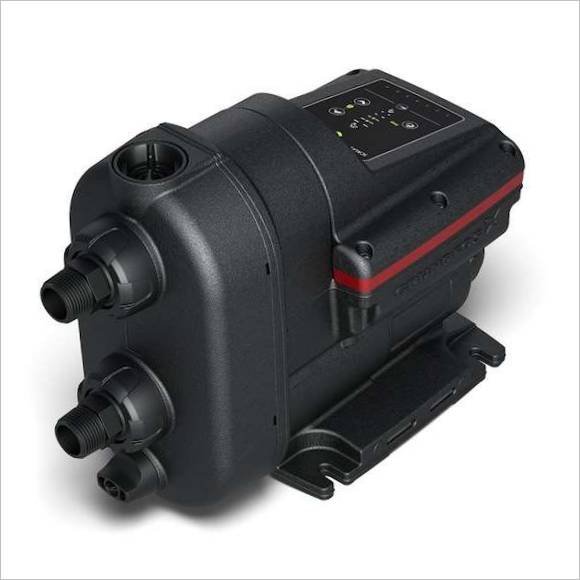
The SCALA2 from GRUNDFOS
Very often in the implementation of the concept of “smart home” homeowners are limited to the lighting system. But there are other engineering systems in the home for potential improvement. One of them is the water supply. It is not uncommon in cottages for two points of water supply to be running simultaneously: for example, one family member is taking a shower while someone else is busy washing dishes in the kitchen. This may cause a change in water temperature or a drop in pressure. Cope with such difficulties can be special “smart” pump units that work directly from the water supply or supply water to the house from wells and boreholes to a depth of 8 meters, ponds and storage tanks. “One of the most modern developments for private households is the SCALA2 pump installation,” comments Ekaterina Semyonova, engineer of the Household Equipment Department at Grundfos. – The equipment independently regulates pressure, is protected from any malfunctions and works so quietly and qualitatively that one can simply forget about its existence.
“The GRUNDFOS SCALA2 is especially equipped with an integrated frequency converter for water delivery and pressure generation: this increases or decreases as a function of consumption. Warning functions are also included. For example, an autostop after a certain amount of time. It will help to avoid big water losses in case of pipe rupture: the pump will stop after 30 minutes, and if someone in the family forgets to turn off the tap, the equipment will stop water supply itself. There is also protection against “dry run” with autostart. For example, in the absence of water the unit will shut down and periodically try to restart. For even more comfort, you can install leak detectors that give an audible signal when the water comes in. Typically, these sensors are installed on the floor under the sink, near the washing machine and dishwasher. They are connected to a safe power source and do not pose a threat if accidentally touched.
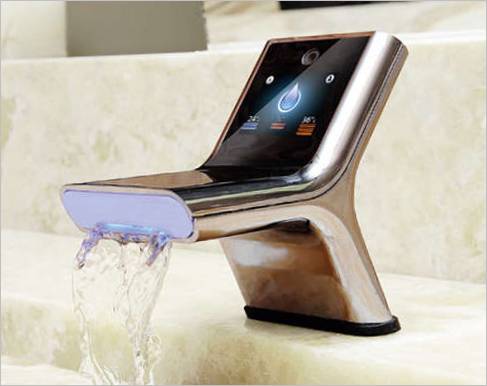
Electronically controlled Smart-Mixer
Smart” solutions for water supply include “smart” faucets with a touch screen electronic control panel. Gadgets are protected against moisture, so nothing critical will happen to them during prolonged use in the bathroom. Once such a faucet is installed, it is possible to program an individual water temperature, pressure and even a backlight for each member of the family. The faucet recognizes faces and turns on the water according to a person’s preferences. The panel not only allows you to change settings, but even enter your email or read the weather forecast.
“Smart technology isn’t limited to faucets. For example, Geberit has launched an electronic toilet with bidet function, which can be set either from a panel on its right side or from a remote. “This solution makes it possible to regulate everything direction, intensity and temperature of the jet , as well as to select the mode of water supply and activate energy-saving functions. Even seat heating is available,” explains Sergey Kozhevnikov, technical director of Geberit.
With warmth in life
Perhaps the most time-consuming in terms of smart technology is the heating system. The effort is worth it: after its automation all the labor and financial costs are recouped a hundredfold, the house will have a favorable microclimate. You can start with something small – the installation of room thermostats. There are devices on the market that do not require a long setup: for example, devices Nest have Internet access, through which they learn the current weather and adjust to it. Of course, it is also possible to control the temperature yourself – manually, through a web interface or with a mobile app.
The user can set the desired degrees, change the algorithms of automatics, study statistics, and so on. Remote control of the device from anywhere in the world is possible. This is very convenient when, for example, you need to warm up your house when you return from vacation or to postpone the start of the heating system due to a delay at work.
A more modern solution – radiators with motion sensors that monitor the schedule of life in the house, and then turn on and off automatically at the right time. There is also a “manual” adjustment of such devices with the help of a smartphone or tablet. For example, you can keep the temperature in the bedroom at 18-200C, in the kitchen – 15-190C, and in a child’s room it is 20-230With.
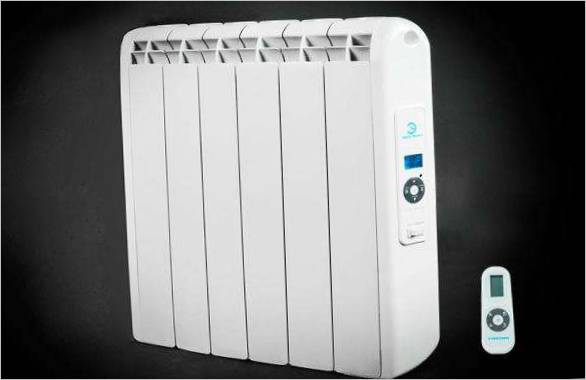
“The smart radiator
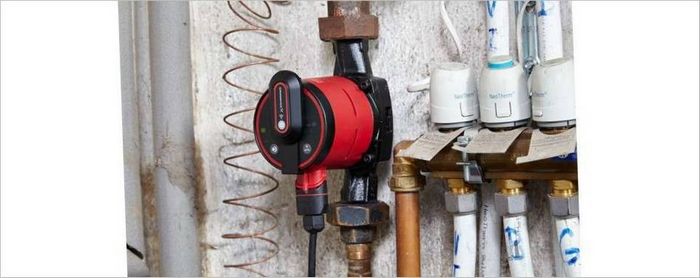
The ALPHA3 circulation pump from GRUNDFOS
Please note, however, that individual adjustment of the radiators is only possible in a two-pipe heating system where the coolant is led separately to each radiator. Moreover, for the correct functioning of such devices need to be balanced. Many people give up on this task because it is too complicated. GRUNDFOS has solved this problem with the ALPHA3 circulation pump with the ALPHA Reader communication module. The equipment allows even the untrained person to cope with the adjustment of the system. Simply install the free Grundfos GO Balance app on your smartphone, enter the required input data floor area, desired temperature in each room, number of radiators, etc and choose the desired temperature. and then instructs you on what to do next. After adjustment of each radiator the pump itself “pushes” the coolant through the pipes in the right mode that will allow to achieve savings of fuel and electricity from 7 to 20%. The equipment will register any changes in the system: if in one room the position of the thermostatic valve is changed, the equipment will reduce or increase the speed. The principle of operation is similar to the SCALA2 units for water supply described above .
Finally, the last step in the modernization of the heating system is a boiler. When choosing this equipment you shouldn’t have any difficulties with the choice of model and automatics to it. You can set the weather control or choose a programmable appliance. Also available with smartphone and PC control.
In addition to the technologies described in the article, there are dozens of other modern solutions: machines for automatic ironing, automatic watering systems, TVs, which determine and take into account the preferences of the owners, etc. . Gradually, and sometimes unnoticed, the stories about the future that we read in our childhood, are becoming reality and part of our everyday life.

Is there a foolproof method or tricks to teach a house to anticipate the desires of its owner? I would love to know how to create an environment where my house can “guess” what I need or want. Any tips or recommendations on how to achieve this?